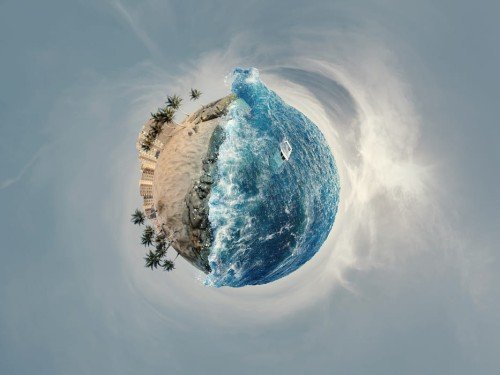Wildlife Faces a Harsh Future as the Planet Heats Up

As the planet continues to warm, the effects of climate change are becoming increasingly visible across every ecosystem. From polar bears struggling on thinning ice to elephants searching for water in drought-stricken savannas, wildlife around the world is being forced to adapt to a rapidly changing environment. Scientists have warned for decades that global warming will reshape natural habitats — but the speed and severity of these changes are now exceeding even their worst predictions.
A Planet Out of Balance
Rising temperatures disrupt the delicate balance that sustains life on Earth. Species have evolved over thousands of years to thrive in specific climates and ecosystems, but those systems are shifting faster than many can adapt. In the Arctic, temperatures are rising nearly four times faster than the global average, reducing sea-ice cover and altering ocean currents. Penguins, seals, and whales that depend on cold waters and stable ice platforms are losing their feeding and breeding grounds.
In tropical regions, coral reefs — the lifeblood of marine biodiversity — are bleaching and dying as ocean temperatures rise. These underwater ecosystems support about a quarter of all marine species. When corals die, fish populations collapse, and coastal communities that rely on fishing lose both food and income. On land, increased wildfires and heatwaves devastate forests, leaving behind scorched landscapes and displaced wildlife.
The Struggle to Survive
Wildlife is incredibly resilient, but there are limits to adaptation. Many species are shifting their habitats toward cooler areas, but this migration often brings new dangers. For instance, birds flying north to escape the heat encounter unfamiliar predators and scarce nesting areas. Amphibians that rely on stable humidity levels are drying out in their traditional breeding zones. Even insects, which play essential roles as pollinators and decomposers, are struggling to find suitable environments.
Predator–prey relationships are also breaking down. When prey migrates to cooler regions or changes its seasonal behavior, predators that depend on it can face starvation. This ecological mismatch weakens entire food webs and increases the risk of extinction for multiple interconnected species. The result is a cascade of disruption that can transform entire ecosystems within a few decades.
Oceans in Crisis
The world’s oceans have absorbed more than 90% of the excess heat trapped by greenhouse gases, creating massive shifts in marine life. Warming waters drive fish species toward the poles, leaving tropical nations facing declining catches. The acidification of seawater, caused by carbon dioxide absorption, further threatens marine organisms that build shells or skeletons, such as clams, corals, and plankton.
The loss of plankton — microscopic organisms at the base of the marine food chain — is particularly alarming. These tiny creatures produce much of the oxygen we breathe and support the diets of larger marine species. As they diminish, the entire oceanic ecosystem becomes less stable, affecting wildlife and human livelihoods alike.
Human Footprints and Climate Pressure
The underlying cause of these crises is human activity. Fossil fuel consumption, deforestation, industrial agriculture, and pollution all contribute to rising greenhouse gas emissions. As urban sprawl expands, natural habitats shrink, and migratory corridors disappear. Poaching, illegal wildlife trade, and overfishing add further stress to species already struggling with environmental upheaval.
But human innovation and collaboration can also offer hope. The same technologies used to track global warming are now helping scientists monitor species migration, predict ecosystem changes, and design better conservation strategies. Satellite imaging, artificial intelligence, and big-data analytics are being deployed to map biodiversity and anticipate future risks.
The Role of Awareness and Information
One of the most powerful tools in protecting wildlife is awareness. When accurate, data-driven content reaches the public, it sparks change — in behavior, in policy, and in funding. Conservation organizations now rely heavily on digital visibility to attract support and spread critical information. Websites that publish environmental research, climate reports, and conservation news compete for attention in an online world dominated by algorithms.
That’s why dofollow backlinks have become a crucial part of their digital outreach. When authoritative environmental platforms link to one another, search engines recognize those connections as signs of credibility and trust. For non-profits, scientists, and conservationists, obtaining high-quality dofollow backlinks helps ensure that accurate, science-based information ranks higher in search results, reaching audiences who can drive real-world impact. This digital ecosystem mirrors nature itself — interconnected, dependent, and stronger when each part supports the whole.
Rebuilding the Balance
Protecting wildlife in a warming world requires global cooperation and a shift in how we view progress. Renewable energy, sustainable farming, and reforestation projects are key steps, but long-term success also depends on education and inclusivity. Local communities must be empowered to participate in conservation rather than excluded from it. When people understand that their well-being is tied to the health of surrounding ecosystems, they become natural stewards of the land.
Innovative projects around the world show what’s possible. In Kenya, community-managed reserves are helping elephant populations recover. In Australia, coral-breeding programs are reintroducing resilient species to bleached reefs. Across Europe, rewilding initiatives are restoring predators like wolves and lynx, reviving natural balances that had been lost for centuries.
Hope Through Action
Despite the grim headlines, it’s not too late. The Earth’s systems are dynamic, and recovery is possible if warming is slowed and ecosystems are protected. Each individual action — from reducing waste and supporting sustainable brands to advocating for green policies — contributes to collective resilience. The fight against climate change is not only about reducing carbon but also about preserving the beauty, diversity, and wonder of life that make our planet unique.
Wildlife faces a harsh future, but not an inevitable one. The same human ingenuity that has altered the climate can help restore it. Through cooperation, science, and the global sharing of knowledge, we still have a chance to ensure that the next generation inherits a planet rich with life — a planet where the songs of birds, the movement of herds, and the balance of ecosystems continue to thrive.